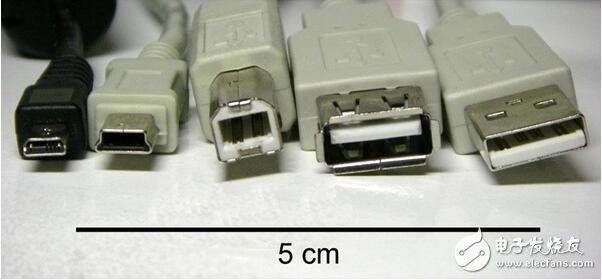Although many of the giants involved in USB-IF, such as Apple and Intel, have told the market with specific mobile, USB type-c is the future, but before the future is coming, users still have to face the painful period of connection. In addition to the troublesome adapter, another problem is the USB type-c transmission standard.
"Transmission standard" is different from "interface style"
In fact, USB type-c is just a USB-IF-customized interface style that is intuitively similar to a "specific hole profile." In addition to type-c, other mainstream interfaces include the popular USB Type A and the USB Type B commonly used in printers. However, outside the interface, USB also supports a variety of transmission standards or protocols, such as USB 3.1, 3.0 or Thunderbolt, the concept is similar to the "transmission line function", so two identical interface interfaces, such as USB Type-C However, it may have different transmission capabilities because it supports different transmission standards.

â–² Various USB interface styles. From right to left, it is A type, A type receptacle, B type, mini B type, and proprietary. (Source: Wikipedia)
For the new MacBook Pro just released, its four USB Type-C supports the Thunderbolt 3 with a transfer rate of 40Gbps. Since Thunderbolt 3 is also compatible with other slower protocols, such as USB 3.1 or USB 3.0, if the user uses the UBS 3.1 standard connector to transfer files, the new MacBook Pro can support it, but the speed is of course only the top of UBS 3.1. Speed ​​10Gbps.
However, on the 12-inch MacBook launched earlier, its single USB Type-C only supports USB 3.0, and the top speed is 5Gbps, probably because it was too late to develop a USB 3.1 control chip. Although it is also compatible with USB 2.0 transmission lines, if the user takes out Thunderbolt 3, or USB 3.1 cable, the 12-inch MacBook will not happen because it is not supported. In simple terms, although the interface of the jack is also USB Type-C, but the supported transmission standards are different, the transmission capacity of the MacBook and MacBook Pro is different.
USB that gives consumers headaches
In fact, the popularization of at least a decade of USB A has faced similar problems. During the reign of the USB Type A interface, USB 3.1, 3.0 and 2.0 also existed at the same time, so that when the manufacturer promoted, it usually specifically emphasized whether its product uses faster USB 3.0 or 2.0. However, with Type-C, the trend of connecting the big ones gradually took shape, and the supported protocols were much more than at that time. Even HDMI was typed into Type-C, which caused consumers to check the specifications more carefully before they could confirm the purchase. The Type-C connection does not support the features you want.

In order to make consumers more aware of what USB Type-C they bought, USB-IF also came up with a way to note an icon on the Type-C plug or the hole, for example, Thunderbolt 3 Draw a lightning bolt. However, vendors sometimes don't necessarily follow this standard, like the Type-C jacks of the new MacBook and MacBook Pro, leaving no illustrations. In other words, the USB-IF approach may also create additional problems. After all, chaotic consumers have to learn to recognize what these icons represent.
As for when will USB Type-C become popular? It may be necessary to consider how fast the USB 3.1 for Type-C control chip can be reduced in volume, or how fast the Intel processor that supports USB 3.1 will be shipped to the market. Interestingly, perhaps the next-generation iPhone will also consider changing the other end of the Lightning line from the current A-type to Type-C.
Note 1: In 2015, USB-IF renamed USB 3.0 to USB 3.1 Gen1, while USB 3.1 changed its name to USB 3.1 Gen2. To avoid confusion, the article still calls the old name. Note 2: USB-IF is a non-profit organization responsible for developing USB standards. Its members are mainly IT giants such as Intel, Microsoft, Apple, and HP.
Zhejiang Baishili Battery Technology Service Co,.Ltd. , https://www.bslbatteryservice.com